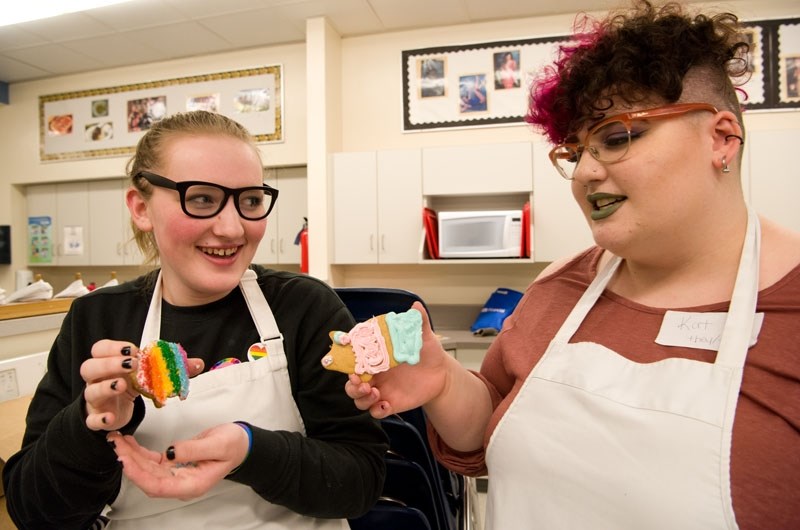If you ask student Kat Hastings if they're a boy or a girl, they'll probably say, "Yes."
"I have days where I feel masculine and some days I feel feminine," said the Grade 12 student from Leduc, who identifies as gender-queer and prefers the pronoun "they" instead of he or she.
Hastings said their school's gay-straight alliance made them feel more comfortable about who they were and a helped them learn more about the lesbian, gay, bisexual, trans and queer community.
"It's a group of people that support me no matter what. It's like a family."
Hastings was one of the hundreds of students, teachers and LGBTQ advocates at Edmonton's Eastglen High School Saturday for the fifth annual Alberta GSA Conference. The free event was meant to help Albertans learn more about gay-straight alliances and how they can help LGBTQ students.
Just 50 people attended the inaugural conference in 2012, noted conference founder and St. Albert resident Kristopher Wells. There were more than 500 at this one, so many that they had to add a separate side conference for interested adults.
"It's almost doubled in size every year."
Last year's passage of Bill 10, which made it so that schools had to allow students to form GSAs if they wanted, highlighted the importance of GSAs to schools, Wells said. Public, private and Catholic board teachers from across the province were at this year's conference to learn more about these groups and LGBTQ issues.
Wells said GSAs today are putting more focus on supporting transgender students, building up non-LGBTQ allies and reaching out to ethnic minorities. There are now well more than a hundred GSAs in Alberta, some of which are in elementary schools.
"It's phenomenal. It really speaks to the changes we're seeing in schools."
Starting the conversation
Research suggests that a class of 27 students will contain two who identify as LGBTQ and 10 who know someone who does, said Melinda McNie, a panellist at the conference and education facilitator for the University of Alberta's Institute for Sexual Minority Studies and Services.
These students may face bullying, harassment, and assault at school, leading to lower academic performance, drug abuse, poor mental health and suicide.
GSAs create safe and caring places where everyone feels welcome and have been shown by researchers to reduce suicide rates, said panellist and Bellerose student Mia Soetaert.
"Even for straight males, it makes them feel safer in school."
Hastings said GSAs have opened up a space where people can talk about issues of sex and gender in school.
"It's giving an excuse for the conversation to happen."
The best way to start that conversation is to just ask, Hastings said. In their case, you might ask why they identify themselves as gender-queer.
"I'm not just a female. I'm neither, or both," they said, showing off the half blue, half pink cookie they made during a conference session to illustrate their point.
"People are sort of afraid to ask that, but I think it actually makes you feel more comfortable (about) not knowing and it makes me more comfortable that you're wanting to know and not making assumptions about me."
LGBTQ students are often not listened to and subject to stereotypes, and may struggle to explain the issues they face, McNie said. Asking a student to "tell me more" and to "help me understand" can go a long way towards helping them.
"Don't make assumptions. Have a conversation and listen."
To support LGBTQ students, Soetaert encouraged people to be active allies by calling out derogatory language and using a student's preferred name and pronouns.
Wells encouraged schools to work with their GSAs to bring in resources such as guest speakers and build awareness through Pride Week activities.
"The most important thing is to listen and learn from the LGBTQ students," he said.
"They know what they need to feel supported in their school environment."




